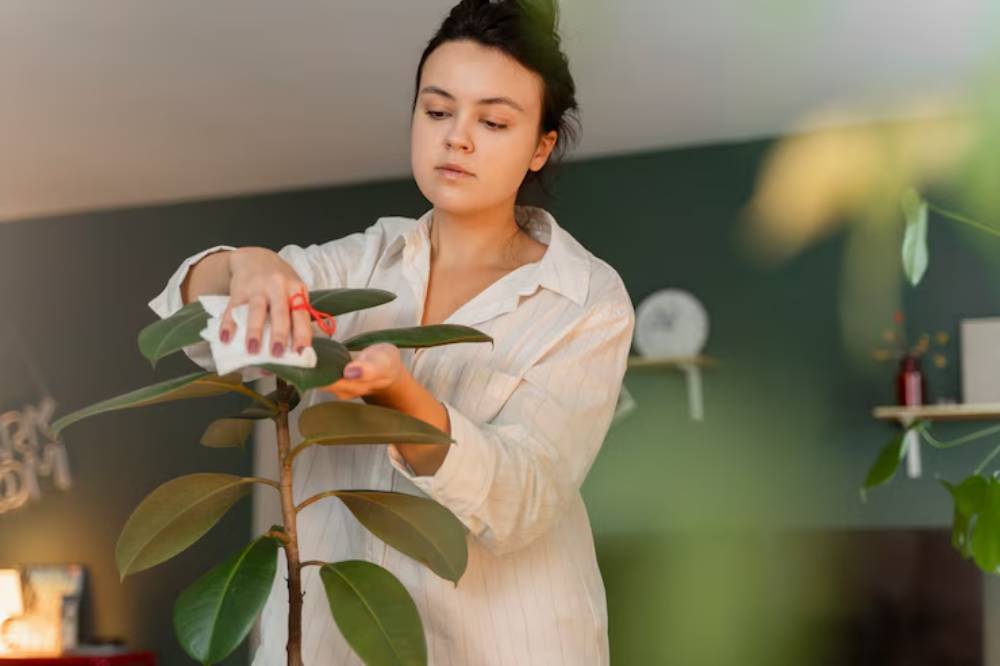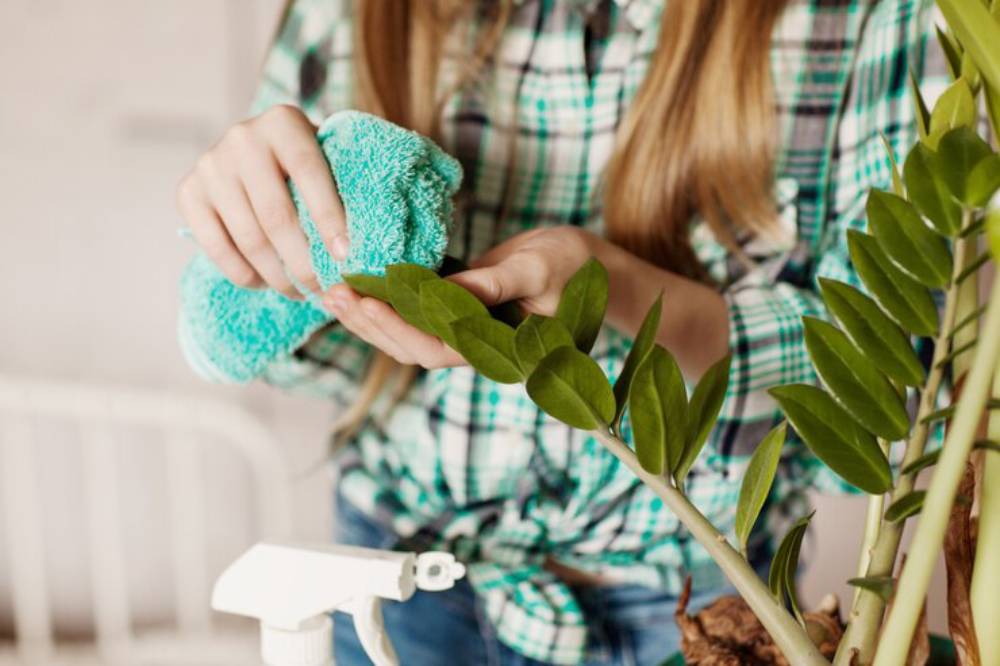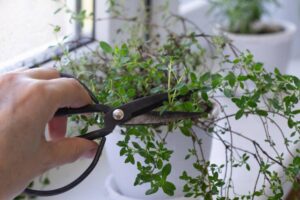The Interior Blog

How to Clean and Dust Your Indoor Plants Properly
If your indoor plants look dull, dusty, or are struggling despite regular watering and light — the problem may be leaf hygiene. Dust-covered leaves can block sunlight, hinder photosynthesis, and invite pests. Fortunately, just a few simple cleaning habits can drastically improve your plants’ health and appearance.
This practical guide walks you through easy, effective methods for plant cleaning that support thriving foliage and keep your home feeling fresh and cared for.
Understanding the Core: Why Plant Hygiene Matters Indoors
Indoor plants live in still air, often surrounded by furniture, electronics, and soft furnishings that shed particles. Unlike outdoor plants that are rinsed by rain and refreshed by breezes, houseplants gather dust — which settles on leaves, clogs pores (stomata), and interferes with respiration.
Dusty leaves not only look neglected but actually reduce light absorption, slow growth, and increase the risk of spider mites, mealybugs, and fungal infections. Keeping leaves clean is a crucial part of houseplant hygiene and can even improve indoor air quality by maintaining their natural filtering power.
Did You Know?
NASA’s Clean Air Study found that plants like pothos and spider plants can help remove airborne toxins — but only if their leaves are dust-free enough to function properly.
Quick Guide: Plant Cleaning Checklist
- Inspect leaves weekly for dust, pests, or residue
- Wipe smooth leaves with a damp microfibre cloth
- Use a soft brush for fuzzy or textured foliage
- Shower or hose rinse monthly for larger plants
- Clean pots and saucers during your routine
- Avoid leaf shine sprays — they clog pores
- Dry gently and return plants to their light zones
If you’re concerned about light exposure after cleaning, explore how to choose the right indoor plants for your light conditions for proper post-cleaning placement.
Step-by-Step Guide: How to Clean Indoor Leaves the Right Way

1. Set up your space
Choose a clean, flat area with good lighting. Lay down an old towel or tray to catch debris.
You’ll need:
- Soft, lint-free cloth or microfibre towel
- Bowl of lukewarm water
- Small soft-bristled brush or paintbrush
- Mild soap (optional)
- Spray bottle (for misting)
2. Dust each leaf manually

Start with the top side of each leaf. Dampen your cloth and gently support the leaf from underneath as you wipe the surface. Repeat on the underside.
Pro Tip: Always wipe in one direction to avoid leaf damage or bruising.
3. Rinse with a gentle shower
For sturdy or large plants like monstera, palms, or rubber trees, place them in the shower or use a hose with a gentle setting. Use lukewarm water and rinse thoroughly.
Important Note: Let water drain completely and avoid splashing soil. Cover the pot with plastic if needed.
4. Use a brush for textured or hairy leaves
Plants like African violets or maidenhair ferns don’t like wet leaves. Instead, dust them with a clean makeup brush or artist’s brush.
5. Clean containers, too
Remove mineral deposits from pots and salt crust from saucers. Soak them in warm vinegar water if needed, then rinse and dry well.
Pro Tip: Cleaning pots prevents pests and improves airflow around roots.
6. Let them dry before relocating
Place cleaned plants in indirect light until fully dry. Wet foliage in direct sun may burn, and moisture trapped in leaf folds can invite mildew.
Best Practices & Additional Insights

- Make it part of your routine: Add plant cleaning to your weekly Sunday reset or monthly deep-clean ritual. A tidy plant is more likely to thrive — and more enjoyable to style around.
- Real-world habit: Some plant parents like to combine cleaning with watering day. Others pair it with rearranging decor or rechecking light zones for seasonal changes.
- A little analogy: Think of plant cleaning like skincare — gentle cleansing improves glow, prevents problems, and supports long-term vitality.
- Keep tools close: Store a small “leaf care kit” near your watering can with a cloth, brush, and spray bottle for quick touch-ups.
FAQs
How often should I clean my indoor plants?
Light dusting can be done weekly, while thorough rinsing or wiping is best every 3–4 weeks, depending on your environment.
Can I use vinegar or alcohol to clean leaves?
No. These can burn or discolour leaves. Stick to plain water or very diluted natural soap (castile or baby shampoo).
Why do some plants hate water on their leaves?
Hairy or thin-leaf plants (like ferns or violets) can trap moisture and rot if their leaves stay wet. Use dry dusting for these types.
What are signs that my plant needs cleaning?
Dull, greyish foliage, sticky sap, or increased pests may signal it’s time for a clean.
Does leaf cleaning improve plant health or just appearance?
Both! Clean leaves photosynthesise better, absorb nutrients efficiently, and reduce pest risks.
Conclusion
Indoor plant care is more than watering and sunlight — it’s about attention to detail. Keeping leaves clean is a simple yet powerful way to support your plant’s health and maintain a polished, vibrant home aesthetic.
You don’t need harsh chemicals or fancy products. Just a soft cloth, clean water, and a few minutes each week can make all the difference. Your plants will breathe easier, grow stronger, and look better — and your indoor space will feel fresher too.
Keeping your plants dust-free works best when they’re also potted correctly. Learn how to repot indoor plants without making a mess for a full plant care reset.
Found this helpful? Share it with fellow plant lovers or bookmark it as your monthly reminder to give your leafy friends a proper clean.









